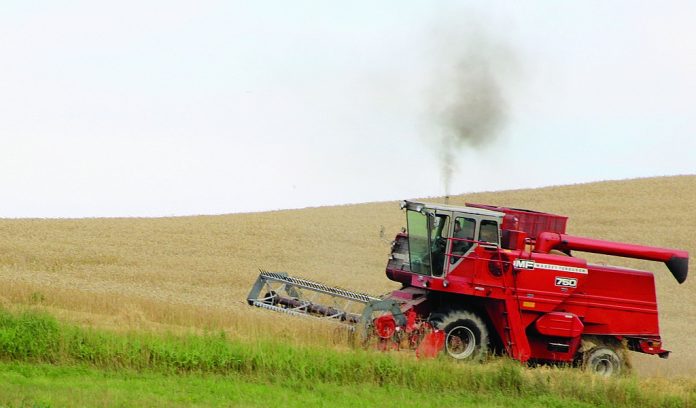Declining crop condition ratings and the perception of poorer crops are driving prices higher on the Chicago Board of Trade these days.
Hot and dry conditions over the Midwest has gone from being a good thing to being a bad thing. December corn futures have gained over 43 cents from the 3.74 low of June 23 to the high last night (July 10) at 4.15. The September corn futures gained over 41 cents to the high overnight a tick under 4.05.
November soybean futures gained 40 cents from the 9.07 low on June 23 to the last night (Monday-Tuesday) high of 10.47.
Chicago September wheat futures, driven by the disastrous North Dakota spring wheat crop, gained 1.11 from the recent low of 4.63 1/2 on June 26 to the 5.74 1/2 high on July 5. We have recently broken from that high, and are trading 5.46 1/4 this Tuesday morning.
Crop condition
While Eastern Ohio still struggles with fields that are mostly too wet, most of the prime crop areas of the country are too dry, with hot and dry forecasts indicating that this will continue.
USDA’s Monday afternoon numbers show a significant decline in conditions over the last week. Ohio’s corn crop is rated only 53 percent good and excellent this week, down 3 percent in a week. The U.S. is rated 65 percent good and excellent, also down 3 percent. Last year at this time, the country was rated 76 percent good and excellent.
CHS Hedging noted Monday that these ratings are the lowest for nine years except the disaster year of 2012.
Slow going
USDA also shows the crop maturity is very slow. This is not surprising, given the cool, wet May, and the fact that we have not had good weather for catch-up.
Ohio is reported to have 10 percent of the corn crop silking, up from 3 last week. However, the average is 16 percent. The U.S. has 19 percent silking, up from 10 last week. However, the average is 27 percent. USDA puts the Ohio soybean condition also at 53 percent, but that is a 5 percent decline in a week. The U.S. crop is rated at just 62 percent, down two for the week. Last year the U.S. was at 71 percent.
Given the crop conditions, it was a surprise, then, to come in this morning, Tuesday, and see sharp declines in prices of all three major crops. December corn futures are down four and a half cents. November soybean futures are off 10 3/4 cents. September Chicago wheat is down four and a half cents.
What’s going on
At this moment, the answer for this is that we are seeing some profit taking. We have just seen the longest rally in soybeans since 2012, 10 trading sessions. So, it remains to be seen if the current change in prices is a correction, or is a reality change brought by a change in attitude or weather forecast.
We know that even in wild rallies, prices are rarely up each day. We know that crop conditions normally decline slowly through the summer, so this could get worse. However, we have seen opportunities for clean-up selling and for new crop pricing. It remains to be seen if better opportunities are ahead.













